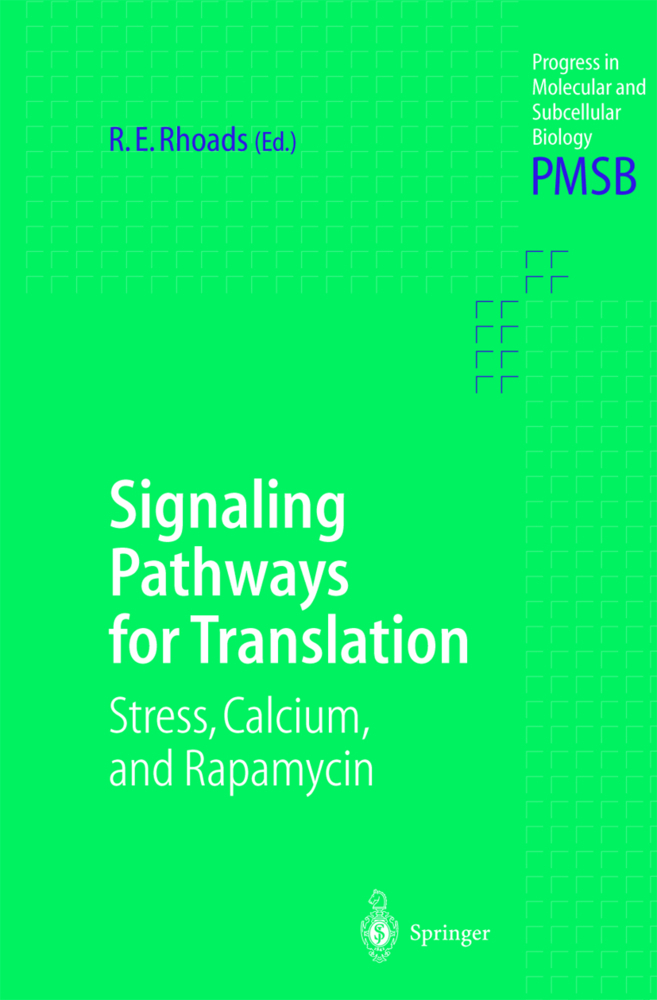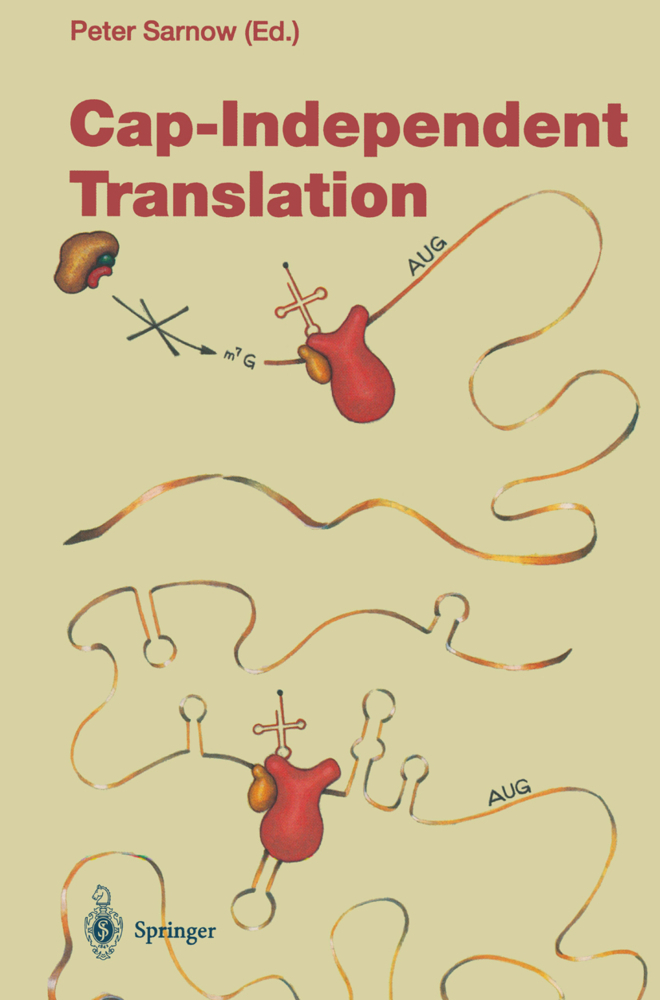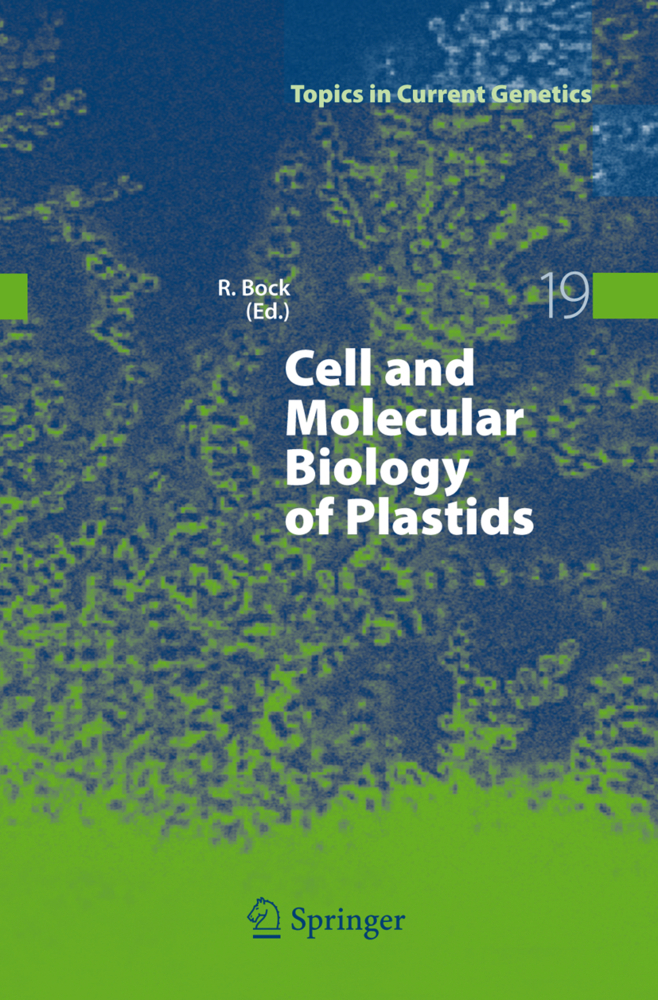Signaling Pathways for Translation
Insulin and Nutrients
Signaling Pathways for Translation
Insulin and Nutrients
The articles in the present volume are by major contributors to our under standing of signaling pathways affecting protein synthesis. They focus pri marily on two extracellular anabolic signals, although others are included as well. Insulin is one of the best-studied extracellular regulators of protein syn thesis. Several of the known pathways for regulation of protein synthesis were elucidated using insulin-dependent systems. Regulation of protein synthesis by amino acids, by contrast, is an emerging field that has recently received a great deal of attention. The dual role of amino acids as substrates for protein syn thesis and regulators of the overall process has only recently been recognized. Since amino acids serve as precursors for proteins, one might expect that with holding an essential amino acid would inhibit the elongation phase. Surpris ingly, research has shown that it is the initiation phase of protein synthesis that is restricted during amino acid starvation. Understanding the mechanisms by which the biosynthesis of proteins is reg ulated is important for several reasons. Protein synthesis consumes a major portion of the cellular ATP that is generated. Therefore, small changes in protein synthesis can have great consequences for cellular energy metabolism. Translation is also a major site for control of gene expression, since messenger RNAs differ widely in translational efficiency, and changes to the protein syn thesis machinery can differentially affect recruitment of individual mRNAs.
2 Mechanism of Translational Repression
3 PHAS Isoforms
4 Phosphorylation Sites in PHAS-I
5 Protein Kinases That Phosphorylate PHAS-I in Vitro
6 Control by Hormones, Nutrients, and cAMP
References
Insulin, Phorbol Ester and Serum Regulate the Elongation Phase of Protein Synthesis
1 Introduction
2 Structure and Function of EF-1 and EF-2
3 Modifications of EF-1 and EF-2
4 Regulation of Elongation by Insulin Via Multipotential S6 Kinase and EF-2 Kinase
5 Regulation of Elongation by Phorbol Ester Via Protein Kinase C
6 Regulation of Elongation during the Cell Cycle by Cdc2
7 Lack of Regulation of Elongation by Protein Kinase Casein Kinase II
8 Conclusions
References
Regulation of Protein Synthesis by Insulin Through IRS-1
1 Introduction
2 Materials and Methods
3 Results
4 Discussion
References
Regulation of Eukaryotic Initiation Factor eIF2B
1 Function and Structure of eIF2B
2 eIF2B Activity Can Be Regulated by the Phosphorylation of eIF2?
3 Regulation of eIF2B Activity in Vivo
4 Mechanisms Involved in the "Direct" Regulation of eIF2B Activity
5 Other Phosphorylation Sites in eIF2B
6 Other Inputs into the Control of eIF2B
7 Conclusions and Perspectives
References
The p70 S6 Kinase Integrates Nutrient and Growth Signals to Control Translational Capacity
1 Identification of the p70 S6 Kinase
2 Expression and Structure
3 Substrate Specificity and Selection
4 Cellular Function(s)
5 Regulation of the p70 S6 Kinase
6 TOR Regulates Cell Function in Response to the Nutrient Milieu
7 p70 is Regulated by Multisite (Ser/Thr) Phosphorylation
8 RTK Recruitment of Type 1A PI-3 Kinases Activates p70 S6 Kinase
9 The Mechanism ofp70 Activation by PI-3 Kinase and the Role of PDK1
10 Candidate "p70 Thr412 Kinases"
11 Conclusion
References
Regulation of Translation Initiation by Amino Acids in Eukaryotic Cells
1 Introduction
2 Regulation by Amino Acids of met-tRNAi Binding to 40 S Ribosomal Subunits
3 Regulation of mRNA Binding to 40 S Ribosomal Subunits by Amino Acids
4 Is There Coordinated Regulation by Amino Acids of Translation Initiation and Elongation?
5 Summary
References.
Insulin Signaling and the Control of PHAS-I Phosphorylation
1 Introduction2 Mechanism of Translational Repression
3 PHAS Isoforms
4 Phosphorylation Sites in PHAS-I
5 Protein Kinases That Phosphorylate PHAS-I in Vitro
6 Control by Hormones, Nutrients, and cAMP
References
Insulin, Phorbol Ester and Serum Regulate the Elongation Phase of Protein Synthesis
1 Introduction
2 Structure and Function of EF-1 and EF-2
3 Modifications of EF-1 and EF-2
4 Regulation of Elongation by Insulin Via Multipotential S6 Kinase and EF-2 Kinase
5 Regulation of Elongation by Phorbol Ester Via Protein Kinase C
6 Regulation of Elongation during the Cell Cycle by Cdc2
7 Lack of Regulation of Elongation by Protein Kinase Casein Kinase II
8 Conclusions
References
Regulation of Protein Synthesis by Insulin Through IRS-1
1 Introduction
2 Materials and Methods
3 Results
4 Discussion
References
Regulation of Eukaryotic Initiation Factor eIF2B
1 Function and Structure of eIF2B
2 eIF2B Activity Can Be Regulated by the Phosphorylation of eIF2?
3 Regulation of eIF2B Activity in Vivo
4 Mechanisms Involved in the "Direct" Regulation of eIF2B Activity
5 Other Phosphorylation Sites in eIF2B
6 Other Inputs into the Control of eIF2B
7 Conclusions and Perspectives
References
The p70 S6 Kinase Integrates Nutrient and Growth Signals to Control Translational Capacity
1 Identification of the p70 S6 Kinase
2 Expression and Structure
3 Substrate Specificity and Selection
4 Cellular Function(s)
5 Regulation of the p70 S6 Kinase
6 TOR Regulates Cell Function in Response to the Nutrient Milieu
7 p70 is Regulated by Multisite (Ser/Thr) Phosphorylation
8 RTK Recruitment of Type 1A PI-3 Kinases Activates p70 S6 Kinase
9 The Mechanism ofp70 Activation by PI-3 Kinase and the Role of PDK1
10 Candidate "p70 Thr412 Kinases"
11 Conclusion
References
Regulation of Translation Initiation by Amino Acids in Eukaryotic Cells
1 Introduction
2 Regulation by Amino Acids of met-tRNAi Binding to 40 S Ribosomal Subunits
3 Regulation of mRNA Binding to 40 S Ribosomal Subunits by Amino Acids
4 Is There Coordinated Regulation by Amino Acids of Translation Initiation and Elongation?
5 Summary
References.
Rhoads, Robert E.
| ISBN | 978-3-540-41709-5 |
|---|---|
| Artikelnummer | 9783540417095 |
| Medientyp | Buch |
| Copyrightjahr | 2001 |
| Verlag | Springer, Berlin |
| Umfang | X, 186 Seiten |
| Abbildungen | X, 186 p. |
| Sprache | Englisch |











